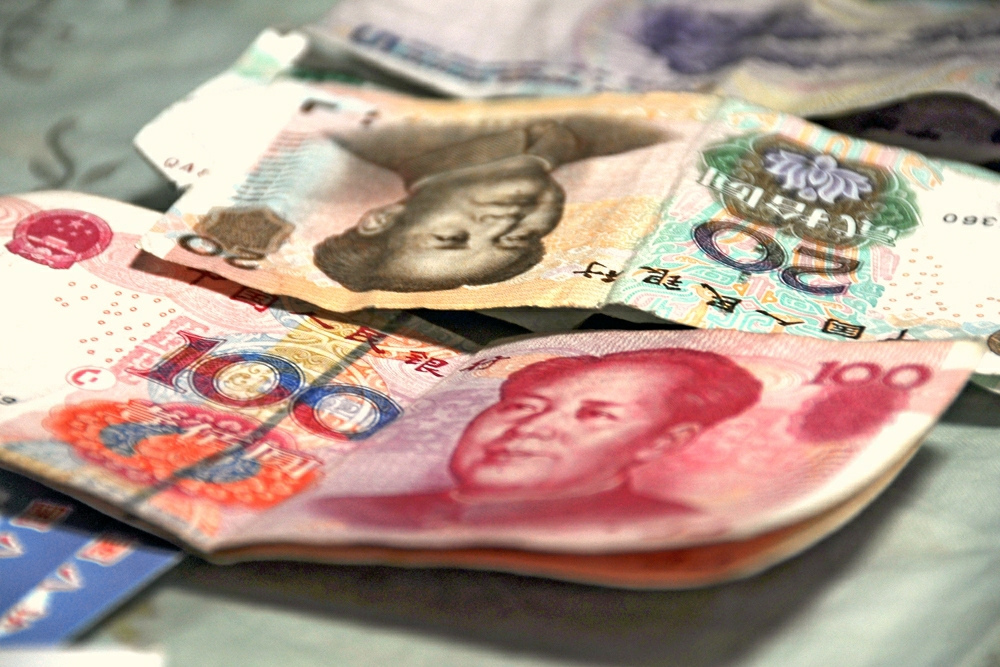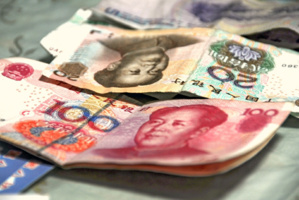In September, the fall in foreign exchange reserves of the Central Bank of China amounted to only $ 43.3 billion, well below the forecast of experts. The index is expected to decline to $ 57 billion.
At the same time, reserves of the country have collapsed by $ 180 billion to $ 3.51 trillion for the last three months. According to the US Treasury, the outflow for eight months has exceeded $ 500 billion.
Yet the unexpected slowdown in outflows in September is alarming, especially as all the evidence suggests maintaining the highest rates in the current month. And if PBOC’s monthly data on the capital outflow is inaccurate or opaque, investors will be working with bad information.
According to Goldman analysts, Chinese banks absorb a certain amount of exodus, using their own balance sheets.
Given that People's Bank of China may possible control the balance, we cannot talk about the complete and accurate picture of the currency flow. A large gap between current and September data suggest that banks could have used their own positions in the spot foreign exchange market to help meet the demand of the outflows.
In general, it is possible that just as the National Bureau of Statistics of China will hide any weakness of the economy (ie growth of less than 7%), the NSC will do everything for not to give confidence in the huge capital outflows to the market.
The People's Bank of China and local lenders have increased their positions on forward contracts up to $ 67.9 billion in August, what spurred the strengthening of the yuan against the dollar. This amount is five times more than the average of seven months. Formation of products is part of a three-step process to support the currency without large-scale use of foreign exchange reserves.
Typically, the Central Bank sells dollars and buys local currency. However, China's state-owned banks lend dollars in the swap market, sell the US currency on the spot market and use forward contracts with the central bank to hedge positions.
The use of derivatives allows restraining the spending of foreign exchange reserves, helping to reassure investors, too sensitive to any negative statistics on the background of the economic downturn and problems in the stock market.
It also allows acting quickly, since there is no need to first sell liquid assets, such as US Treasury bonds, to obtain the dollars needed for direct purchases yuan.
On a practical level, this scheme means that the PBOC will not reduce liquidity of the yuan in the market, as in the case of direct purchase of a large amount of currency in the spot market. Besides, it was partially possible to replenish funds, depleted during the intervention, by lowering interest rates and reserve requirements in August.
Source: Bloomberg.com
At the same time, reserves of the country have collapsed by $ 180 billion to $ 3.51 trillion for the last three months. According to the US Treasury, the outflow for eight months has exceeded $ 500 billion.
Yet the unexpected slowdown in outflows in September is alarming, especially as all the evidence suggests maintaining the highest rates in the current month. And if PBOC’s monthly data on the capital outflow is inaccurate or opaque, investors will be working with bad information.
According to Goldman analysts, Chinese banks absorb a certain amount of exodus, using their own balance sheets.
Given that People's Bank of China may possible control the balance, we cannot talk about the complete and accurate picture of the currency flow. A large gap between current and September data suggest that banks could have used their own positions in the spot foreign exchange market to help meet the demand of the outflows.
In general, it is possible that just as the National Bureau of Statistics of China will hide any weakness of the economy (ie growth of less than 7%), the NSC will do everything for not to give confidence in the huge capital outflows to the market.
The People's Bank of China and local lenders have increased their positions on forward contracts up to $ 67.9 billion in August, what spurred the strengthening of the yuan against the dollar. This amount is five times more than the average of seven months. Formation of products is part of a three-step process to support the currency without large-scale use of foreign exchange reserves.
Typically, the Central Bank sells dollars and buys local currency. However, China's state-owned banks lend dollars in the swap market, sell the US currency on the spot market and use forward contracts with the central bank to hedge positions.
The use of derivatives allows restraining the spending of foreign exchange reserves, helping to reassure investors, too sensitive to any negative statistics on the background of the economic downturn and problems in the stock market.
It also allows acting quickly, since there is no need to first sell liquid assets, such as US Treasury bonds, to obtain the dollars needed for direct purchases yuan.
On a practical level, this scheme means that the PBOC will not reduce liquidity of the yuan in the market, as in the case of direct purchase of a large amount of currency in the spot market. Besides, it was partially possible to replenish funds, depleted during the intervention, by lowering interest rates and reserve requirements in August.
Source: Bloomberg.com






